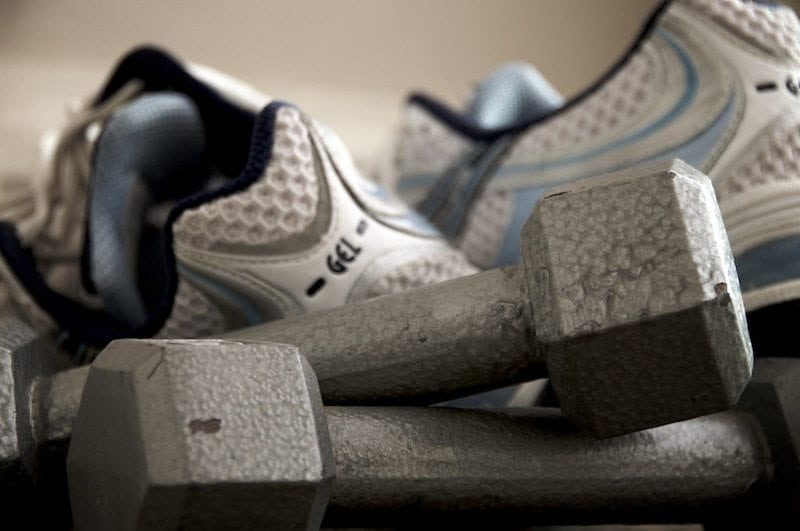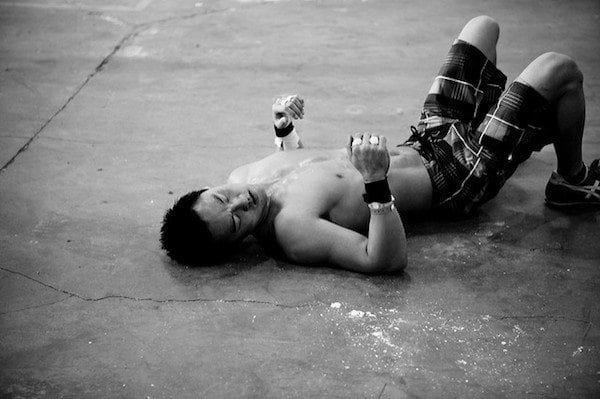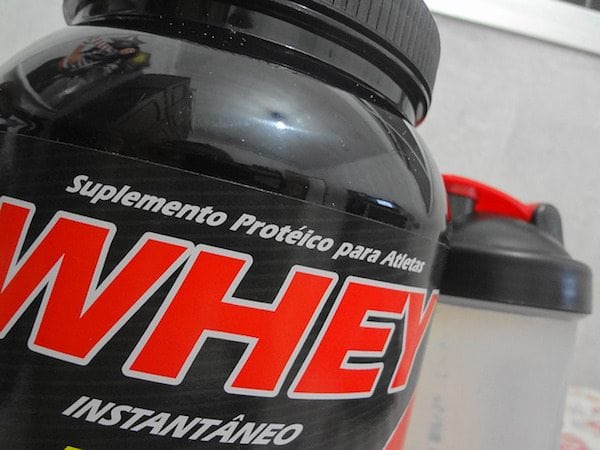No products in the cart.
Muscle Building Workouts For Beginners

Being a beginner in the gym is both the best of times and the worst of times (to misquote “A Tale of Two Cities”).
On the one hand, you have to deal with being a lot less in shape than most members of the weight room, you also have debilitating DOMS to deal with, and a lot more costs than you have previously had to deal with (protein powder, gym membership, running shoes).
On the other, you will experience faster fat loss and quicker gains in muscle size than you will ever see again.
This is a period of training that should be cherished and you should take every opportunity to maximise your results. It is the aim of this article to equip you with everything you need to succeed as a gym beginner.
To do this we will discuss planning out a training program, exercise selection, typical beginner training programs, and we’ll also take a quick look at nutrition and supplements.[toc]
Step One: Planning Your Program
When starting out you may be tempted to get absolutely everything perfect.
You aren’t going on any old diet, you’re going to follow the perfect diet. You aren’t going to follow a normal training program, you are going to follow the perfect training program.
For some people, this way of thinking will work fine, but for the majority, all this will lead to is procrastination.
“My whey protein hasn’t arrived yet, can’t start yet”
“There are seventeen different programs to follow on page 1 of Google, I better research which one to follow in case I pick the wrong one”
As you can see, this phase can end up lasting weeks! That’s not to say that jumping straight into training without any plan is a good idea – we’re just pointing out that waiting for the perfect moment to train will last forever.
So the first thing that you should do is sign up for a gym, once you’ve done that you can pretty much start straight away.
You can use any of the training programs in this article, provided that your main goal is to build muscle.
If you are looking for fat loss, then you can still use these programs! As a beginner, you are in the unique position of being able to make decent strength gains and fat loss at the same time, something that more advanced trainees will struggle to do without drugs.
You will want some form of gym appropriate shoes and clothes, no high heels or three-piece suits (particularly not together).
You’ll also want a notebook to record your training sessions (weights used, reps managed etc), but don’t let a lack of notebook prevent you from entering a gym – use your phone if you have to.
We’ll discuss nutrition and supplementation at the end, but suffice it to say that you will need to increase protein, watch your calorie intake, and cut down on junk food and alcohol.
It’s a good idea to take some measurements of your current progress too. How will you know whether you have made progress if you haven’t recorded your starting weight or muscle size?
The measurements that you should consider taking are:
- Weight
- Waist circumference measurement (measure from hip bones)
- Chest circumference measurement
- Arm circumference measurement
- Leg circumference measurement
- Abdomen circumference measurement (measure at belly button)
- Profile photo (not breathing in) in mirror
- Side on photo (not breathing in) in mirror
Step Two: Rep Range and Rest Time

When lifting weights or using resistance machines, you don’t just perform as many reps of an exercise as you can and then stop). You group a number of reps together in what is called a “set”. Then you perform a number of sets.
Most programs use three sets per exercise, so, for example, you would perform three sets of ten reps of bench press (thirty reps).
Three isn’t a magic number (no matter what Schoolhouse Rock or De La Soul have told you), you can perform four sets or two sets, or ten sets, and some programs (German Volume Training) follow this. But as a beginner let’s keep things simple, and stick to three sets.
The amount of reps that you perform per set is a much more important subject.
Most people split rep ranges into three categories: low rep (1-6 reps per set), medium rep (8-12 reps per set) and high rep (15 reps or more).
For some reason, a 7 rep set is unheard of!
As you can see, these are just rough groups but if someone says they’re going low rep you’ll now have an idea what they’re talking about.
It used to be believed that low reps built strength, medium reps built bigger muscles, and high reps increased muscular endurance. But now the consensus seems to be that a mix of rep ranges is best for building bigger muscles (known as hypertrophy).
So a good hypertrophy program will use a mix of low rep ranges, medium rep ranges, and high rep ranges.
Another consideration is how long you should rest between sets, most people tend not to worry about this at all and end up training when they feel like it.
This can actually be a good idea, particularly when you’re a beginner and your fitness is not up to much. Listen to your body, when you’re ready you can start again.
But for those of you who want an answer to “what rest time is best”, a study by Schoenfeld et al (2015) found that longer rest periods (3 minutes compared to 1 minute) are more effective at increasing strength and hypertrophy [1].
If you are looking for fat loss then resting for shorter than 1 minute is more effective.
Using a stopwatch is a great way to make sure that you stick to these rest times, but remember if you need longer to recover then listen to your body.
You will find, particularly at the start, that it may take quite a bit longer to recover from a tough set.
Step Three: Picking a Workout
In this section, we are going to create 4 workouts, pick whichever one suits your specific needs the most.
You can also use them as inspiration to create your own program. Just follow these simple rules:
- Dedicate as much time on legs as you do on the upper body
- Allow at least one day’s rest in between each workout until your body has adapted to the program
- Pick a rep range strategy and stick to it.
- Always look to progress, increase difficulty whenever you can do so with good form
Prioritise compound movements (exercises that utilise more than one muscle group at a time)* over isolation movements**
*Compound Movements: deadlifts, squats, bench press, lat pulldown, overhead press, dips, pull ups, push ups, rows
**Isolation Movements: bicep curl, tricep pushdown, leg extension, leg curl, abdominal crunch, dumbbell fly, lateral, front, or rear delt raises
Workout #1: Full Body Training Program (3 Day)
Monday
- Dumbbell Goblet Squats 3 x 12
- Leg Curl Machine 3 x 15-20
- Walking Lunges 3 x 10
- Bench Press 3 x 8-12
- Lat Pulldown 3 x 8-12
Tuesday
- Rest
- Walk 6,000 steps +
Wednesday
- Leg Curl Machine 3 x 15-20
- Kettlebell Deadlifts 3 x 6-8
- Leg Extension 3 x 12
- Push Ups (on knees if required) 3 x 10
- Bent Over Row 3 x 8-12
Thursday
- Rest
- Walk 6,000 steps
Friday
- Leg Press 3 8-12
- Romanian Deadlift 3 x 8-12
- Overhead Press 3 x 6-8
- Rear Delt Fly 3 x 15-20
- Abdominal Crunch 3 x 12-15
- Plank x 1
Saturday
- Rest
- Walk 6,000 steps +
Sunday
- Rest
- Walk 10,000 steps +
Workout #2: Upper/Lower Body Split (4 Day)
Monday
- Leg Curl Machine 3 x 12-15
- Goblet Squats 3 x 12-15
- Step Ups 3 x 12
- Glute Bridges 3 x 10
- Calf Raises 3 x 20
Tuesday
- Rest
- Walk 6,000 steps +
- Abdominal Crunches 3 x 12-15
Wednesday
- Dumbbell Bench Press 3 x 8-12
- Chest Flys 3 x 20
- Assisted Pull Ups 3 x 8-12
- Single Arm Dumbbell Rows 3 x 12
- Rear Delt Flys 3 x 20
Thursday
- Rest
- Walk 6,000 steps +
- Bicycle Crunches 3 x 10
Friday
- Leg Curl Machine 3 x 8-12
- Barbell Deadlifts 3 x 6
- Romanian Deadlifts 3 x 8-12
- Leg Extensions 3 x 12-15
- Seated Calf Press 3 x 6
Saturday
- Rest
- Walk 6,000 steps +
- Bent Knee Raises 3 x 20
Sunday
- Incline Barbell Bench Press 3 x 12-15
- Seated Shoulder Press 3 x 8-12
- Barbell Shrugs 3 x 15-20
- Lat Pulldown 3 x 8-12
- Seated Cable Row 3 x 12-15
Workout #3: Push/Pull (4 Day)
Monday
- Leg Press 3 x 8-12
- Walking Lunges 3 x 10
- Leg Extensions 3 x 12
- Bench Press 3 x 8-12
- Cable Chest Fly 3 x 12-15
- Seated Shoulder Press 3 x 12
Tuesday
- Romanian Deadlift 3 x 12
- Sumo Deadlift 3 x 6-8
- Leg Curls 3 x 12-15
- Lat Pulldown 3 x 8-12
- Seated Cable Row 3 x 8-12
- Barbell Bicep Curl 3 x 8-12
Wednesday
- Rest
- Walk 6,000 steps +
- Long Arm Crunches 3 x 12
Thursday
- Barbell Squats 3 x 8-10
- Step Ups 3 x 10
- Leg Extensions 3 x 12-15
- Chest Press 3 x 8-12
- Close Grip Bench Press 3 x 8-12
- Push Press 3 x 8-12
Friday
- Lying Leg Curls 3 x 12-15
- Barbell Deadlift 3 x 10
- Dumbbell Romanian Deadlift 3 x 15-20
- Assisted Pull Ups 3 x 12
- Single Arm Dumbbell Row 3 x 12
- Dumbbell Shrugs 3 x 12-15
Saturday
- Rest
- Walk 6,000 steps +
- Bent Knee Raises 3 x 20
Sunday
- Rest
- Walk 6,000 steps +
- Plank x 1
Workout #4: Bodybuilder Split (5 Day)
Monday
- Push Ups 3 x 10
- Bench Press 3 x 8-12
- Assisted Dips 3 x 8-12
- Cable Chest Fly 3 x 15-20
- Tricep Cable Pushdown 3 x 15-20
Tuesday
- Leg Curls 3 x 12-15
- Sumo Deadlifts 3 x 6-8
- Walking Lunges 3 x 20
- Leg Extensions 3 x 8-12
- Smith Machine Calf Raises 3 x 20-25
Wednesday
- Assisted Pull Ups 3 x 10-15
- Close Grip Lat Pulldown 3 x 8-12
- Low Row 3 x 8-12
- Single Arm Dumbbell Row 3 x 10
- Cable Bicep Curls 3 x 12
- Dumbbell Hammer Curls 3 x 10
Thursday
- Romanian Deadlifts 3 x 8-10
- Barbell Back Squats 3 x 8-12
- Leg Press 2 x 20
- Step Ups 3 x 10
- Seated Calf Press 3 x 6-8
Friday
- Rear Delt Flys 3 x 20
- Face Pulls 3 x 12-15
- Seated Shoulder Press 3 x 8-12
- Dumbbell Front Raises 3 x 10
- Dumbbell Lateral Raises 3 x 10
- Barbell Shrugs 3 x 20
- Abdominal Crunches 3 x 12-15
- Bent Knee Raises 3 x 20
- Plank x 1
Saturday
- Rest
- Walk 6,000 steps +
Sunday
- Rest
- Walk 6,000 steps +
Step Four: Nutrition and Supplements

Counting calories using a calorie counting app such as myfitnesspal is one of the best ways to ensure that you get incredible muscle building results.
If you are overweight, then you can create a small calorie deficit (eat less than you burn) so that you lose weight, you will still be able to build muscle.
If you are at a good weight but want to build muscle, or if you are underweight (skinny) you need to create a calorie surplus. This is where you consume more calories than you burn, the extra calories will be used to build muscle.
Increasing your protein intake is very important as this is the main macro responsible for creating muscle.
The best supplement to purchase would be a pack of whey protein powder. It’s cheap, helps you hit your protein targets, improves recovery and muscle gain, and will combine well with other supplements such as creatine.
Here is a quick supplement shopping list, that you might want to consider:
- Whey protein
- Casein protein
- Creatine
- Pre-Workout
- Natural Testosterone Booster (if your T levels are lower than average)
So there you have it, if you are a beginner just starting out at the gym then following our tips above can make a dramatic change to your physique.
Just remember to push yourself, but also to perform each exercise with proper form. You most certainly do not want to injure yourself performing an exercise poorly.

Workouts are one thing but what about a bit of information on nutrition!!
Yes, nutrition is incredibly important of course. What kind of information are you looking for?
We have articles dedicated to bulking and for cutting if you are interested. 🙂
Need some videos to show how to perform each workout.